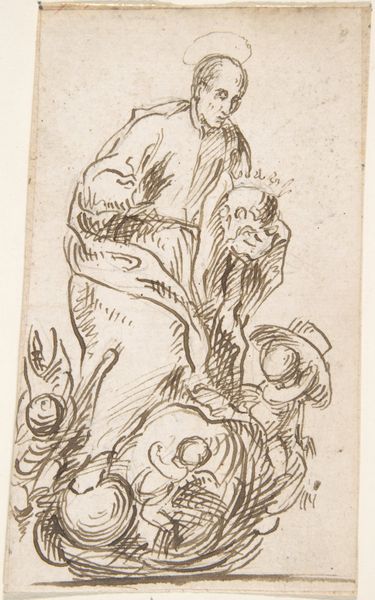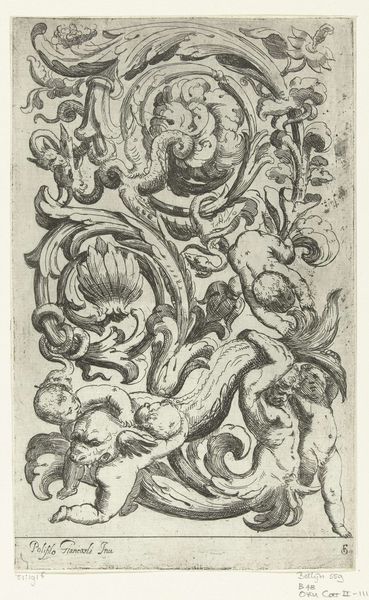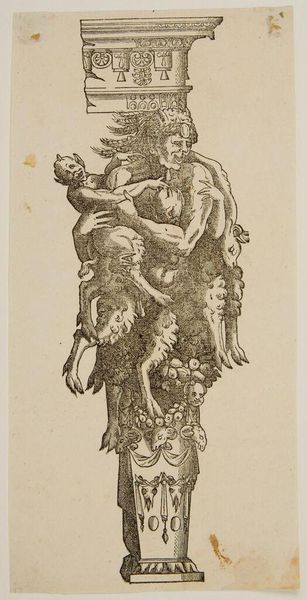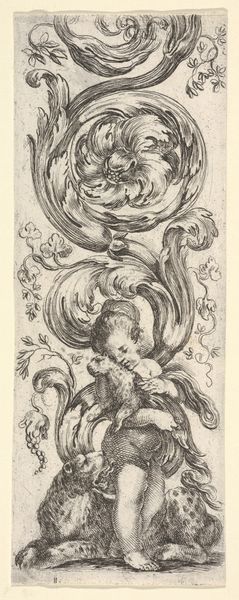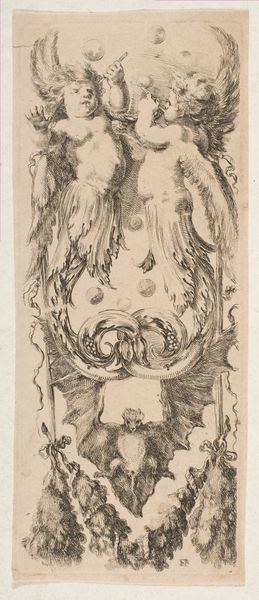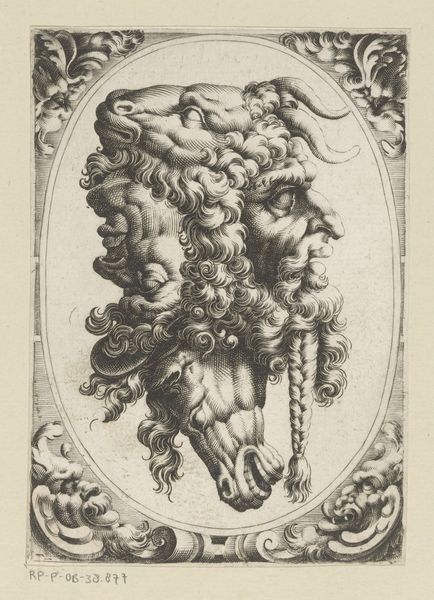
Festoen met attributen van de personificatie van het element Aarde aan westzijde van de Burgerzaal in het Stadhuis op de Dam 1663
0:00
0:00
hubertquellinus
Rijksmuseum
drawing, print, engraving
#
drawing
#
allegory
#
baroque
# print
#
figuration
#
decorative-art
#
engraving
Dimensions: height 320 mm, width 96 mm
Copyright: Rijks Museum: Open Domain
Editor: This is "Festoen met attributen van de personificatie van het element Aarde aan westzijde van de Burgerzaal in het Stadhuis op de Dam," a drawing by Hubert Quellinus from 1663. It feels very ornamental, but there is more going on than first meets the eye. What sort of imagery strikes you, looking at this work? Curator: The imagery speaks volumes. See the children at the very top, intertwined with laurel? Consider them in relation to the lions below. It’s an Earth festoon, after all; fertility and strength, innocence and dominion. Does it spark any ideas in you about civic pride and the era's worldview? Editor: I do notice a certain emphasis on bounty – the fruit, the wheat. Almost like a cornucopia celebrating Amsterdam's prosperity, especially during the Dutch Golden Age. The lion makes sense given its symbolism. Curator: Precisely. And notice how even the architectural detailing takes on symbolic form? Each element contributes to the overarching theme: the Earth as a source of power and plenty, vital to Amsterdam's identity and status. It mirrors a conscious projection of Amsterdam's global role through visual codes and emblems. It's about reinforcing that identity for themselves, and communicating that self-image to visitors and other political entities. What message do you think that communicated to its contemporary viewers? Editor: I hadn't considered how intentional the imagery was; beyond pure decoration, it's a complex visual statement about Amsterdam itself. It's amazing to consider. Curator: Exactly. It reveals cultural memory and continuity through visual symbols. Each aspect reflects back the values of a particular place, a particular time, a very particular cultural lens.
Comments
No comments
Be the first to comment and join the conversation on the ultimate creative platform.

